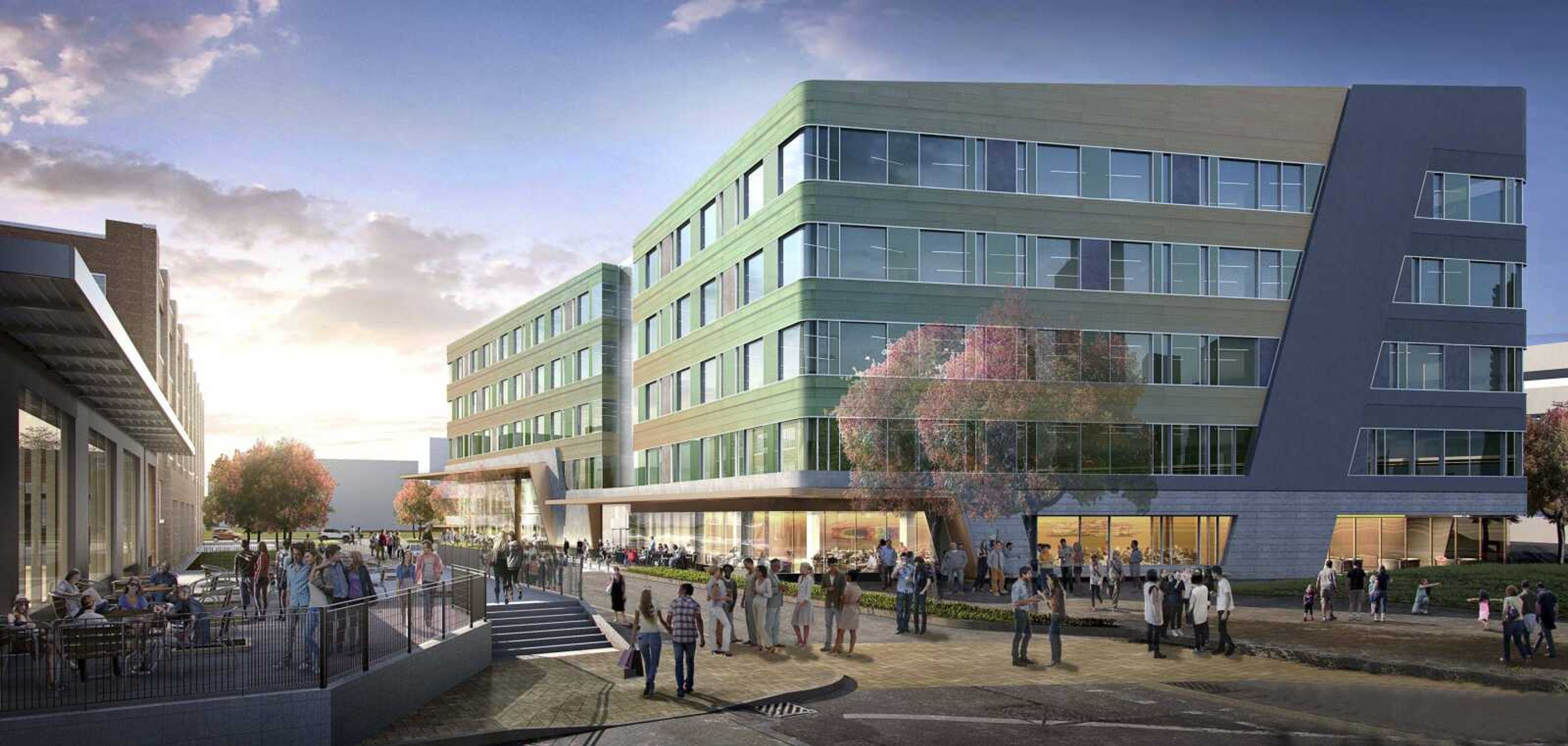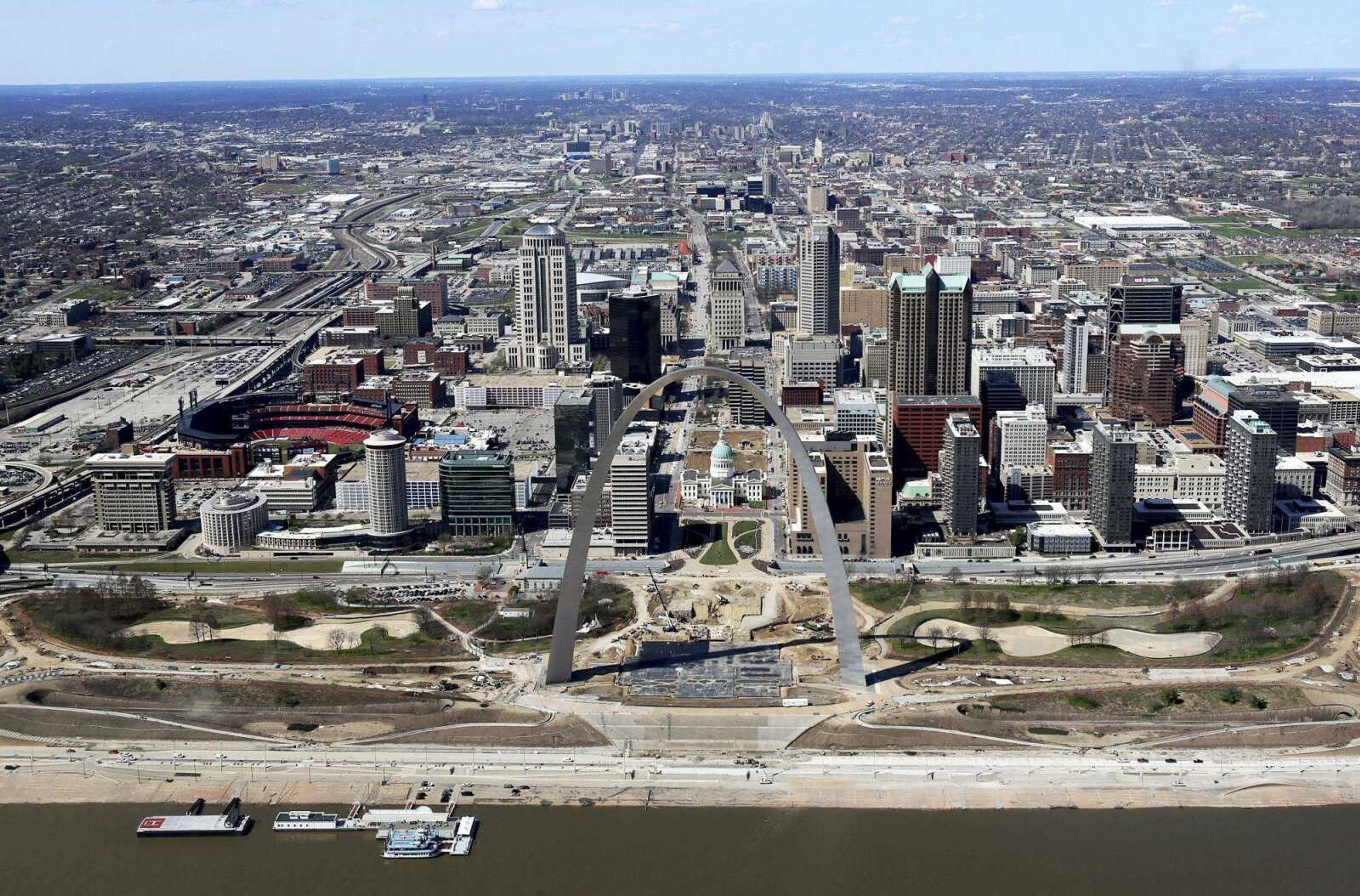After long decline, St. Louis tries to rebuild with startups
ST. LOUIS -- It's tough to rebuild a city's image when the national perception is it peaked a century ago, and when recent news sometimes has been dismal. St. Louis was the nation's fourth-largest city in 1904, the year it hosted the Olympics and the World's Fair...
ST. LOUIS -- It's tough to rebuild a city's image when the national perception is it peaked a century ago, and when recent news sometimes has been dismal.
St. Louis was the nation's fourth-largest city in 1904, the year it hosted the Olympics and the World's Fair.
Since then, a half-million in population has been lost to the suburbs. The majestic Gateway Arch towers above a downtown eerily quiet at night, except when Major League Baseball's Cardinals are playing.
Today's St. Louis, with 320,000 residents, ranks 60th in population.
Last year, it lost its NFL team, and images of rioting after the 2014 police shooting of an unarmed, black 18-year-old in nearby Ferguson fed impressions of racial turmoil.

But the city's fortunes finally might be looking up, thanks to a surprising surge in business startups.
Forbes recently cited St. Louis as the fastest-growing city for startups, and the analytical website fivethirtyeight.com listed St. Louis as the second-fastest growing startup community in the fall.
The region is home to more than 700 bioscience companies, many launched in the last few years and linked to the city's universities and medical institutions.
St. Louis leaders hope the city at last has found a way to fill the gap left by the loss of Fortune 500 companies, such as Trans World Airlines and McDonnell Douglas, after corporate mergers and the closing of manufacturing plants.
Expanded science and health employment helped revive other sagging Rust Belt cities, notably Pittsburgh, where sprawling medical complexes and research on robotics and artificial intelligence have helped replace defunct steel mills.
"I actually think the heyday of St. Louis was 1904," said Dedric Carter, who oversees entrepreneurship efforts at Washington University in St. Louis. "There were certainly down cycles in years after that. But I look at the future as harkening back to that heyday that was 1904, when there was great building; there was great innovation."
Still, the city's problems make unclear how far the revival will go.
Despite highly publicized efforts to create more economic opportunity in the African-American community, 36 percent of black residents live below the poverty line, compared with 15 percent of whites.
And in a city nearly evenly split between whites and blacks, the vast majority of violent crime victims -- and assailants -- are black.
"There is so much growth and so many opportunities looking to take flight in St. Louis," said John Gaskin III, an NAACP national board member who has been active in local reconciliation efforts since the shooting of Michael Brown in Ferguson. "But if we don't deal with some of the basic problems, I feel like we'll miss our mark."
Geographically and socially, St. Louis always has been a mix of the industrial north and the Old South. Its population peaked at more than 850,000 in the mid-20th century.
In addition to its Fortune 500 companies and Mississippi River commerce, St. Louis was second only to Detroit in automobile production.
But the suburbanization that followed World War II was extensive here, along with white flight. The city's population is down 63 percent from the 1950 Census.
Assets that remained in the city included universities with specialties in medical research, along with large science-based companies such as Monsanto and life-sciences firm Sigma- Aldrich. In recent years, civic leaders have tried to make science enterprises a foundation for the future.
The efforts included BioSTL, an organization established to provide seed money for biotech startups. A nonprofit called Arch Grants provides $50,000 equity-free grants and free support services for scientists and entrepreneurs.
Overall, bioscience startups employ more than 15,000 people. Venture-capital investment in St. Louis more than doubled from 2013 to 2015, according to the St. Louis Metropolitan Medical Society.
Connect with the Southeast Missourian Newsroom:
For corrections to this story or other insights for the editor, click here. To submit a letter to the editor, click here. To learn about the Southeast Missourian’s AI Policy, click here.









